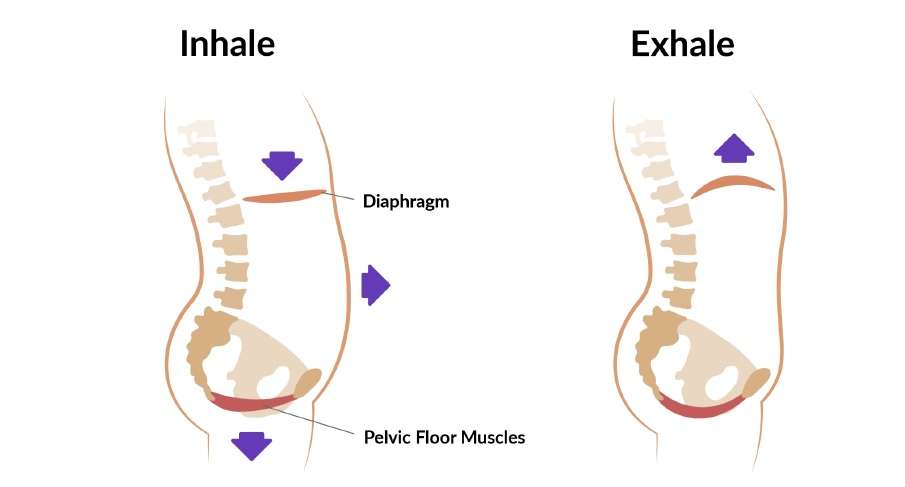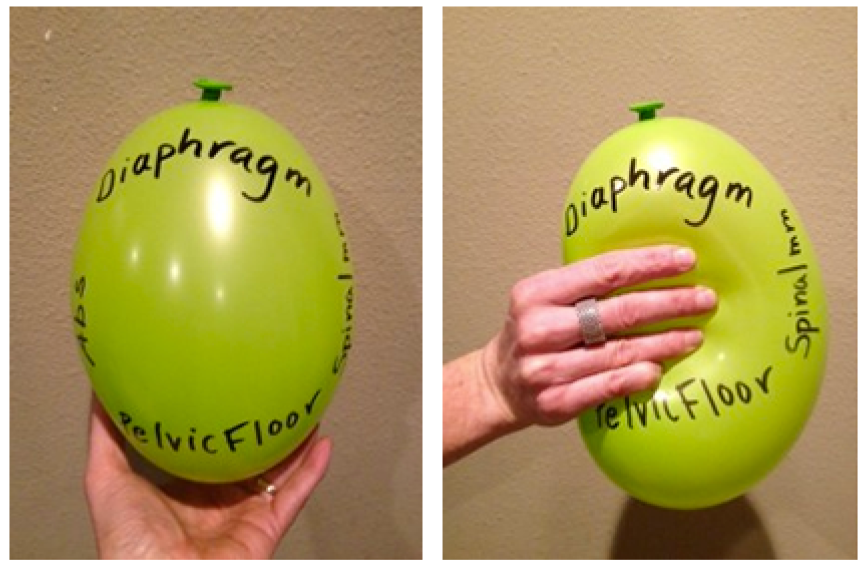Most of the women we work with have been told to do kegels at some point in their life. Whether it was right after giving birth, later in life due to urinary leakage, or from a well-meaning Instagram guru, this advice is nearly unavoidable. Although kegels (when performed correctly!) do sometimes have their place, oftentimes they might be doing more harm than good.
If you want a more in-depth explanation of pelvic floor anatomy, check out our previous blog post “PELVIC FLOOR 101: What even is the Pelvic Floor?!”
As a quick refresher, the pelvic floor consists of 3 layers of muscles that sit at the base of your pelvis. They work together with your diaphragm, abdominal muscles, and back muscles as part of your core.
When we inhale, our diaphragm comes down, our ribs expand, our abdominal muscles and pelvic floor relax and come out and down. With our exhale, our diaphragm relaxes up, and our abdominals and pelvic floor come up and in.

These muscle systems need to work together in a coordinated way, and if something is off, we start to have trouble managing pressure within our trunk and we get stresses where there shouldn’t be, leading to dysfunction in our pelvic core. This can result in urinary leaking, tight muscles, and pain.
One way to envision these potential issues is through the use of a balloon.

If you look here, the top of the balloon is our diaphragm, the bottom is our pelvic floor, and in the middle is our abdominals and back muscles. If the diaphragm comes down, but the pelvic floor isn’t relaxing down at the same time, you can see that there’s all this pressure pushing down. To try to compensate, our pelvic floor muscles become tight to try to counter that pressure. When the pelvic floor isn’t able to overcome that pressure anymore, we get symptoms of leaking and heaviness.
And this is exactly why telling someone to “just do some kegels” without a pelvic floor assessment is wrong!
Take urinary leaking, for example. You might think, “oh, I can’t hold in my pee, so my muscles must be weak.” And that MIGHT be the case. But it could also be that the muscles are so tight, that when the diaphragm comes down, the pelvic floor muscles don’t move with it and all that pressure gets put down onto the pelvic floor. If the pressure is more than the pelvic floor can handle…. we’ve got leakage.
So, if we had just ASSUMED that we’re having leakage because of weakness, and started doing kegels and squeezing on these muscles that are ALREADY tight, it’s just going to lead to more tightness and we’re not doing ourselves any favors.
This is why an assessment by a pelvic floor physical therapist is so valuable. Through an internal examination, along with a whole-body movement screen and assessment, we can figure out the root cause of the issue. We can determine if it’s muscle weakness, muscle tightness, muscle coordination issues, breathing issues, pressure issues, or something else, and give you individualized treatment for your specific needs. Guessing without assessing is a disservice to you and your pelvic floor!
So, what are some reasons why you might want to come to see us?
- If You’ve given birth and you don’t feel as strong as you used to.
- You feel like you have to rush to the bathroom or you might leak with coughing, sneezing, or running.
- You’re worried you might have a diastasis and how it might affect you getting back to their activity
- You have been diagnosed with prolapse
- You have pain in the genitals, perineum, pubic, or bladder area, or pain with urination
- Or if You’re dealing with back pain or hip pain that won’t go away even after you’ve tried other treatments
…pelvic floor physical therapy might be exactly what you need.
Dr. Jen Ryan DPT, PT, CSCS



